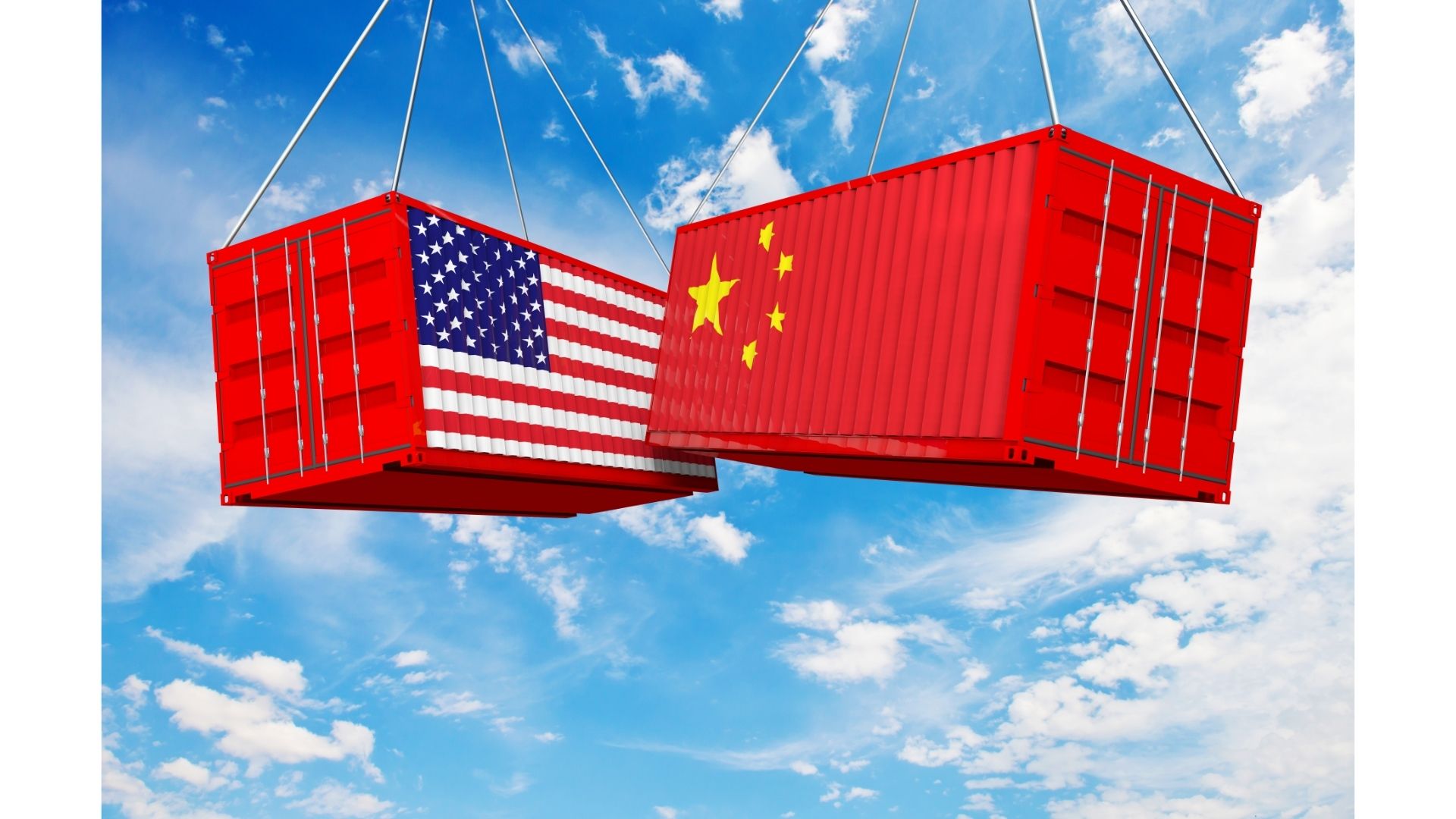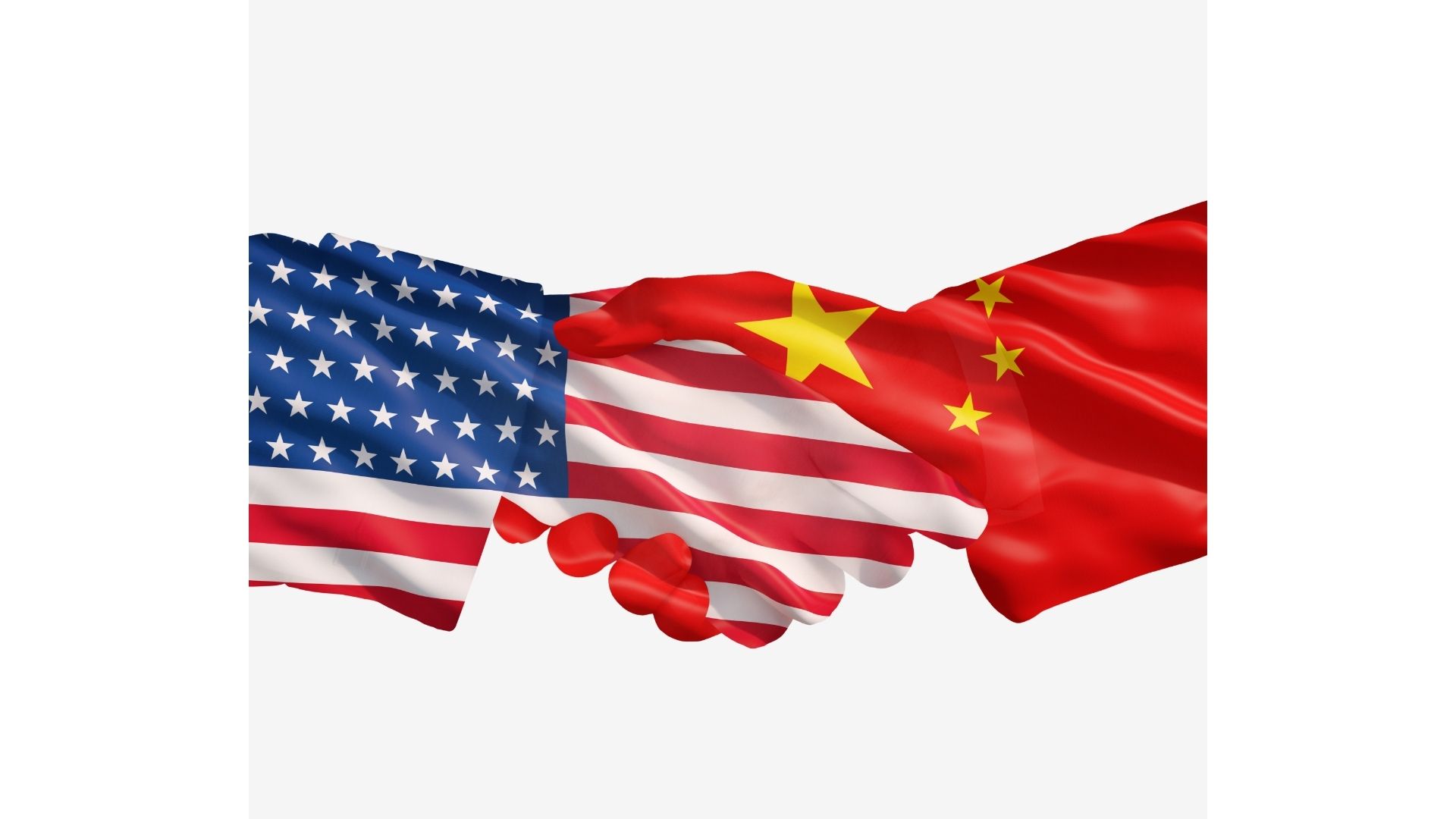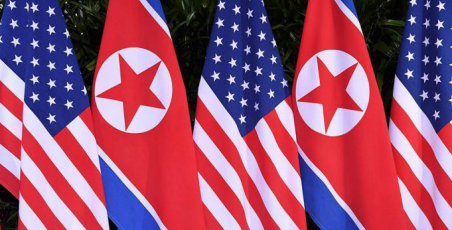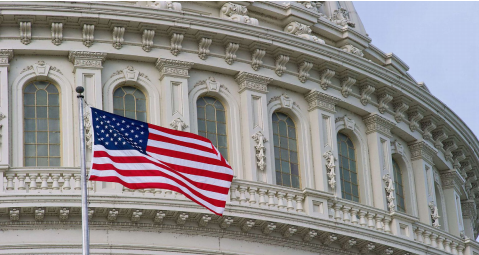1. Introduction
Relations between China and the United States are currently the most complex bilateral issue for both countries. Over the past nearly seventy-two years, the relationship has gone through a major transformation from military conflict to high tension, however, during the same period there has been reason to find common ground in trade, climate change and international crises. Today, the two governments stand in the middle of a crisis not necessarily of their own making, but rather, provoked by the previous U.S. administration.
As we mentioned in Taihe Institute Observer’s April 2021 issue, while both countries may not share common stances or interests on many issues, they do have a sound track record of working together on some of the most complex issues facing the world. Critically, resolving the current state of U.S.-China relations could be the defining moment in 21st century international relations.
Were the situation to deteriorate into a new Cold War the consequences could be dire due to changes in technology, strategies, international actors, and political aspirations. This scenario brings to the fore the importance of cooperation between all global stakeholders, particularly regarding communication between major powers such as China and the United States. In our last issue we underlined how greater engagement, improved communication and a willingness for reconciliation will ultimately guide China and the U.S. to a peaceful and mutually beneficial coexistence.
There have already been substantial efforts made towards cooperation such as the Alaska talks and the Shanghai climate meeting between the U.S. and China. Ongoing sensible diplomatic efforts for cooperation by Beijing and Washington are the way to prevent misunderstandings and troubling divergence.
A scholarly experiment in international relations using the prisoner’s dilemma game showed that countries cooperate better with open lines of communication at their disposal. Details of that experiment are in our commentary section.
Taihe Institute Observer has dedicated its April and May 2021 issues to the cooperation theme of U.S.-China relations. This Part 2 in the series identifies further areas of collaboration and explores the specifics of the ones our April issue highlighted. The next (June) issue will focus on competition in the U.S.-China relations with thought-provoking views. Whether cooperation or competition dominates U.S.-China relations, challenges are best tackled by constructive engagement and the pursuit of win-win outcomes.
2. Analysing Cooperation Theme in IR and China-U.S. Relations
2.1 Are China-U.S. Relations a Zero-Sum Game?
More than 40 years after the establishment of diplomatic relations between China and the United States, the two countries are competing in almost every domain, from trade to technology and from maritime rights to lunar exploration. As competition becomes the primary dynamic in U.S.-China relations, a growing consensus holds that the two countries are retreating from a win-win world and marching into a new cold war in which winning requires the other’s defeat. This idea, however, is an overstatement. It overlooks the specificity of our current political realities and imputes a level of fragility that has not existed for many years. China and the U.S. may have structural and perceptual gaps on many fronts, but their capacity to endure and manage those differences is greater than many tend to assume. The relationship is not destined to fall apart.
While analysts often draw parallels between now and the geopolitical landscape in the decades following World War II, U.S. relations with China fundamentally differ from those with the former Soviet Union during the Cold War era. The U.S.-Soviet relationship was primarily defined by an ideological clash: the Soviet Union wanted to build a world of communist countries while the United States wanted to create one that was more democratic and capitalist in nature.
In contrast, the current rivalry between China and the U.S. is mainly located in the economic and technological spheres, and although the political and military aspect of the competition is increasing over time, it is a far less defining feature than it was for Washington and Moscow. As Chinese President Xi Jinping stated at the high-level 2017 meeting titled “CPC in Dialogue with World Political Parties”, China does not import foreign models or export its own. It does not require other countries to replicate its own mode of development, and it will never seek hegemony or embrace expansionism.
In an interview with the Chinese state-run Xinhua News Agency last year, State Councilor and Foreign Minister Wang Yi pointed out that today’s China is not the former Soviet Union. “China does not export ideology,” Wang said, adding that China is a “firm defender” of the international system and does not seek to replace the U.S. in the current world order.
In the past, conflicts between countries could largely be handled at the governmental level. But in recent decades, as stakeholders in the prevailing international order have grown in number and variety, simple transactional behavior in foreign policy has become increasingly less viable for managing disputes. Politics in today’s world is not a zero-sum game. The net outcome from any competition cannot be zero, and one power’s gain does not equal a competitor’s complete loss.
Over the 40 years since China’s reform and opening up to the world, U.S.-China relations have become more extensive, varied, and interdependent in terms of both each other and the global system as a whole. Their relationship is now supported by more diverse interests and constituencies. For one thing, in the current age of globalization, China is deeply integrated in supply chains involving both the US and its allies. These economies are co-dependent, with supply chain interconnections binding them together in peace and prosperity. In other words, as the world’s two largest economies, the viability of the U.S.-China relationship has now become supported by more constituencies.
Major disputes between China and the U.S. jeopardize the interests of all the nations that benefit from the prevailing order, while many governments are averse to the evolution of “Group of Two” spheres of influence situation where they will automatically alienate one by aligning too closely with the other. Lack of cooperation, not to mention the complete decoupling that many have proposed, will ultimately create a situation where the whole world bears the cost.
Since Joe Biden assumed the U.S. presidency on January 20, 2021, Washington did not initially signal a de-escalation in trade tensions with China. Although U.S. trade representative Katherine Tai told the Financial Times in early May that she expected to meet her Chinese counterpart, Liu He, soon , and that she and Liu had a virtual meeting on May 27, the legacy of the trade policy of Biden’s predecessor, Donald Trump—particularly its condemnation of China’s IP and technology transfer practices—may continue or even intensify.

(source: canva.com)
This trade confrontation has yielded no winner thus far: both the U.S. and China have suffered substantial losses due to their unilateral tariff retaliations, including such negative externalities as job losses and stock market shocks. This has caused spill-over effects for other key players, including Canada and Australia, and the paralysis of the World Trade Organization after the U.S. blocked the election process for the WTO’s Appellate Body since 2016. In short, this is a negative-sum competition that could leave no winners.
Equally important to these discouraging developments, however, is the impact of shared challenges that have consolidated a sense of solidarity between the two countries since the end of the Cold War. No state can still consider its national security solely a function of the areas in its close proximity. Rather, amid issues such as climate change, infectious disease, terrorism, and arms proliferation, the security of one country is tightly linked to the security of all. Security risks are no longer exclusively military in nature, and these new transnational problems cannot be solved solely by the effort of a single country or a handful of countries alone.
The COVID-19 crisis has highlighted the fact that no country can afford to foment a new form of global division that recalls the worst moments of the Cold War. China and the U.S. are subject to the constraints of interdependence that require them to foster a habit of working together for the well-being of all countries and people. While engaging with one another in areas of mutual concern may create more room for friction, especially as the Biden presidency is scoring global attention under the pledge “America is back,” the increased understanding and dialogue it occasions may help manage the impact of disagreements.
Although competition between China and the United States has become increasingly intense, the two countries’ relationship is not as brittle as many assume and the danger of collapse or of the emergence of the kind of hostility that existed during the Cold War is arguably small. In today’s world the opportunity costs of frictions are high. This is not just because of the lost opportunities to cooperate and benefit, but also because of the fact that other countries are understandably unwilling to take difficult, costly, or contentious steps in relation to transnational issues unless they are confident the two superpowers have reached a basic consensus on the need for such action. As Biden said on September 23, 2020 in Nevada, he does not regard US relations with China as a zero-sum game. “There’s a lot at stake in this relationship,” Biden said when asked about Xi’s telling the UN General Assembly that China had “no intention to fight either a cold war or a hot war with any country.”
2.2 Instruments of Cooperation
Whether or not Beijing and Washington can minimize their divergences depends largely on how conducive they find their cooperation instruments. Both sides can make substantial progress through bilateral and multilateral capacities.
Despite the pandemic, the new U.S. administration made a breakthrough in hosting the first ever US-China high-level face-to-face talk in Anchorage, Alaska in March 2021. Though rhetoric overshadowed substance, the meeting signaled mutual will to discuss and explore after the previous U.S. president’s rampage of tweeting.
Bilateral dialogue is imperative and should be further encouraged to lay the ground for both sides to address pressing issues and their differences. Such a bilateral platform has higher chance of compromise since it involves quasi-technical issues. However, more instruments are available for the two to work on a wide range of urgent regional and global issues, ranging from economics to politics to security.

At regional and multilateral levels, no other fora are more pragmatic and conducive than those in the ASEAN and East Asia, where the U.S. and China have held respective spheres of influence for decades. Thus far, the U.S. and China have utilized high-track diplomacy in these regions through fora such as the ASEAN-U.S. Summit, the ASEAN-China Summit, the ASEAN Regional Forum, and the East Asia Summit (EAS). However, for the two to harness their cooperation potential, other players in these platforms need to encourage it rather than divide them by taking sides or sitting on the fence. In ASEAN, for instance, the South China Sea issue would be dealt with faster through the ASEAN and China’s expedition of the Code of Conduct to reinforce the regional order, removing causes for military confrontation between China and the US and its allies, especially Japan and Australia. ASEAN member states have important roles in this expedition process.
Through the East Asia Summit, which consists of 18 members led by ASEAN, key players such as Australia, New Zealand, Japan, and Russia have influential voices and should minimize the risk of discontent between China and the U.S.. Japan, South Korea, Australia, and New Zealand are close U.S. allies, and supporting U.S.-China confrontation would endanger their own interests in such issues as North Korea’s nuclear weapons build-up near South Korean and Japanese territories and China’s trade measures against Australia as the spillover effect of US-China trade war.
When Washington-Beijing cooperation runs into setbacks at the global level, especially in international forums such as the UN Security Council and the WTO, the two can deal with pressing issues in a bilateral or regional setting.
Economic diplomacy is another cooperation instrument in superpower relations. Negotiating economic deals can get cross-sectorial tension under control. Such economic diplomacy would also positively shape further U.S.-China interactions. The China-EU Comprehensive Agreement on Investment (CAI) testifies that is possible to move from a competitive mindset to a cooperative one. In that case, the lifting of tit-for-tat sanctions between the EU and China made it possible to reach a deal. China has pledged that it will not allow ideological differences to influence the negotiations on the deal, which was a clear green signal. Both parties possess the diplomatic capacity to overcome the obstacles before the ratification process. Economic relations between the U.S. and China can assume the same model. The postponed negotiations on the U.S.-China Bilateral Investment Treaty (BIT) are expected to resume under the new administration and will surely help secure lucrative U.S. interests in China.
Although bilateral cooperation instruments may be more practical at this stage, a broad range of multilateral instruments also provide opportunities. Reforming the WTO, IMF, and World Bank will certainly demand Beijing-Washington coordination. The Biden administration has so far avoided Trump-style responses to the WTO Appellate Body’s work, responses which deadlocked the resolution of trade disputes and other relevant multilateral issues. Facilitating other actors’ roles, including the EU, Japan, Australia, and New Zealand, through the platforms like G-20 and the Bretton Woods institutions, could create promising prospects for China-U.S. cooperation.
2.3 What is broad-based cooperation as opposed to interest-based cooperation? Can China and the U.S. move their cooperation to a broad-based one from the interest-based format with the latter having proven short-lived so far?
There have been many proven opportunities for the United States and China to cooperate on specific issues, including but not limited to climate change mitigation, counterterrorism and nuclear non-proliferation. While some of the ‘interest-based’ cooperation efforts have proven successful, others have failed to create a lasting impact. To improve their overall relations, the U.S. and China should attempt to engage with each other in the framework of a ‘broad-based’ cooperation. Engagement using this approach could potentially lead to lasting resolutions of points of conflict, whereas ‘interest-based’ cooperation often has too narrow of a focus to resolve fundamental disputes between the two countries.
First and foremost, it is important to define cooperation in the context of international relations. Robert Keohane’s definition, widely accepted by international relations scholars globally, states that cooperation occurs “when actors adjust their behavior to the actual or anticipated preferences of others, through a process of policy coordination.” Additionally, this definition implies that cooperation between countries provides all actors with gains and that each country’s behavior is directed towards specified goals. Another scholar, Joseph Grieco, states that cooperation is promoted when there is a balanced distribution of gains.
The idea of ‘broad-based’ cooperation requires an improved bilateral relationship between the U.S and China, but this form of cooperation can also be achieved through international institutions. As described by Steven McGuire in Cooperation in International Political Economy, “cooperation can also be understood as a process where states comply with international agreements they are parties to, and where they refrain from taking unilateral action to solve a collective problem.”

The U.S. labeled China as a strategic competitor in 2017, but some of the actions taken by the Biden administration may slowly be laying the foundation for improvements in communications and relations between the two countries. On April 15-16, 2021, both sides’ Special Envoys for Climate met in Shanghai. In the joint statement released after the meeting, the two parties highlighted that they are committed to “cooperating in multilateral processes, including the United Nations Framework Convention on Climate Change and the Paris Agreement.”
When it comes to the climate crisis, engagement in a multilateral context is a key component for the development of a ‘broad-based’ cooperation, helping move the issue from an “interest-based” one as most countries shape their domestic climate policies around their own interests.
Moving forward, the U.S. and China should seek to drop many of the labels used in policies directed at each other. The U.S. frequently drops terms such as “strategic partner” and “responsible stakeholder” while China often calls for a “new type of great power relations.” These terms are indicative of a common desire to work together, but the focus should instead be on developing a detailed agenda based on broad and shared interests and goals. Efforts should also stipulate topics that are nonnegotiable: for China, the U.S. should not make provocative measures on subjects such as Taiwan, and China should not downplay U.S. concerns on intellectual property rights.
With a mutual understanding of the benefits of cooperation, respect for each other’s core values, and the possibility to have a positive influence on the global community both economically and in the security sector, the U.S. and China can and should cooperate and reduce the tensions in their relationship. When each country feels secure that their core interests are being preserved, they can move beyond working on precise topics and towards more general matters.
2.4 Do China and the U.S. need common interests or complementary interests to be tempted to cooperate?
Using the definitions of various categories of a state’s interests as described by scholar Thomas W. Robinson, common interests and complementary interests play different roles in different stages of the development and maturity of the relationships between two nations. Common interests are areas in which states have identical assessments, evaluations, and approaches to a particular issue. Complementary interests, on the other hand, may be similar but not identical, which leaves room for discussion and debate, but does not guarantee agreement. In the case of the current rivalry between the U.S. and China, identifying and working on complementary interests would likely lead to a higher level of cooperativity than solely focusing on common, or shared, interests.
Differing but complementary interests can both serve as the building blocks for better and mutually beneficial agreements. The ensuing cooperativity functions as in biology where enzymes or receptors that have multiple binding sites display: binding of one ligand alters the affinity of the other site. In such a model, other subunits are also stimulated for possible further cooperation.
In periods of ‘great power competition’ countries are likely to stick to their core principles as maintaining domestic support and approval are crucial for such competition. This leaves little room for negotiation in the sphere of common interests. In recent years, the U.S. has turned its focus away from being a part of the ‘opening of China’ to instead pursue a policy of containment. With respect to identifying purely common interests, the options of avenues to pursue are getting limited.
Instead, there are many issues that the U.S. and China can address using their complementary interests as a means for neutralizing the tension in their relations. As stated by Roger Fisher, William Ury, and Bruce Patton of the Harvard Negotiation Project in their guide Getting to Yes: Negotiating Agreement Without Giving In, “agreement is often made possible precisely because interests differ.”
One such example of a subject meeting this criterion is the possibility for the U.S. and China to use the denuclearization and unification of the Korean Peninsula as a manner of working together towards a common goal, albeit with different priorities and objectives.

Both Beijing and Washington would benefit and experience challenges as a result of the denuclearization and unification of the Korean Peninsula. China is an important actor for North Korean economy and security; as a result of the widespread sanctions imposed on the North Korea, nearly all trade is facilitated through China, ultimately guaranteeing the existence of its economy. Although North Korea provides a buffer between China and the presence of the U.S. in Japan and South Korea, the financial and security risks involved may outweigh the benefits of the status quo. As long as the current antagonistic situation continues, there is always a risk of a conflict drawing in outside powers, including the U.S..
Denuclearization would provide the United States with a victory for its nuclear nonproliferation campaigns, but it would also eliminate a justification for stationing a significant U.S. military presence in Northeast Asia. Clearly, the U.S. has interests in maintaining its military presence in the region, because it allows for continued surveillance and deterrence towards China.
Although there are unique advantages and disadvantages to the current situation of the Korean Peninsula for both the U.S. and China, there is always a risk of a new escalation between North Korea and South Korea, which can ultimately create further challenges for both powers. As a result, both China and the U.S. have incentives to end the conflict on the Korean Peninsula. To achieve peace, neither the U.S. nor China will receive their desired outcomes for each step of the process. By practicing the basic concept of give-and-take, the U.S. and China would open channels for further diplomatic communication and could learn to work together on other global issues, even if the two parties disagree on the ideal approach to a resolution.
Outside of the realm of denuclearization and nonproliferation, the U.S. and China can take advantage of distinct interests and priorities to work towards achieving stability in other regions as well. One such timely example would be the case of Afghanistan, where the U.S is currently withdrawing its military forces after a nearly two-decade presence in the country.

(source: CGTN)
Following the disintegration of the Soviet Union and the establishment of independent states in Central Asia, the United States and China began to compete further for influence in this region. Central Asia is important for the connectivity and expansion of China’s Belt and Road Initiative, and the U.S. values strong relations in the region for developing military partnerships for counterterrorism efforts and promoting energy security. While the U.S. and China may be at odds for influence in many countries in Central and South Asia, the two countries have an opportunity to work side by side in Afghanistan, which is situated on the crossroads of Central Asia and South Asia, and contribute towards the establishment of lasting peace and stability in the country.
In both the Trump and Biden presidencies, the removal of U.S. armed forces from Afghanistan became a foreign policy priority. The U.S. Military has had a presence in Afghanistan since 2001, and, according to the U.S. Department of Defense, total military expenditure in Afghanistan from October 2001 to September 2019 equaled $778 billion.
While the U.S. and its NATO partners have been the most prominent foreign forces in Afghanistan, there is significant potential for China to contribute to the establishment of peace in the country.
The U.S. seeks the establishment of a peaceful and stable Afghanistan so that it can reduce its military expenditure in the region. Due to the exorbitant costs of military involvement in the country, the American public want to turn a page on the ‘endless wars’ of the Middle East and other regions. In order to justify a military withdrawal, the U.S. needs to achieve a level of confidence in the stability of the country.
It is also in China’s interests to promote stability in Afghanistan, albeit for different reasons. Afghanistan borders China’s Xinjiang region, which is one of the most important components of China’s domestic security policy. Improved stability and a general reduction in terror activity in Afghanistan would lessen the chances of extremist spillover into China’s western provinces, thus benefiting China as a whole.
Similarly, stability in Afghanistan would prevent another form of spillover that would be of interest to China. One of China’s most important partners in the South Asia region is Pakistan, which would benefit greatly from peace and stability in Afghanistan. Pakistan is a crucial component of China’s Belt and Road Initiative, but the country is heavily influenced by the Afghanistan situation. More than 1.4 million Afghan refugees are registered in Pakistan, creating a financial and social burden for the people of Pakistan. With this situation solved, Pakistan would also experience greater stability and prosperity, thus benefiting China’s existing footprint in the country.
In both cases, it is clear that the U.S. and China can benefit from the same outcome, even if the contributing factors and justifications diverge from each other. There may be hesitation on both sides about engaging each other in fields such as conflict resolution, but even cooperation at the simplest levels can open the door for improved communications and the possibility for engagement on a greater number of issues.
2.5 Exploring possible areas of U.S.-China interdependence and strategic partnerships
There are a number of areas both sides either have an existing interdependence relationship, such as semiconductors, or can easily create strategic partnerships which can facilitate cooperation, mutual trust and help manage discord?
However, in recent years, there has been attempts by the Trump administration to break this cycle and decouple both sides. This has been observed in various industries; the U.S. is pushing initiatives to increase semiconductor and microchip production outside of China, source new reserves of rare earth minerals, and remove pharmaceutical facilities and production of medical supplies from China. Despite these actions, there are numerous categories where the U.S. and China can, and should, form strategic partnerships to work towards common goals. Three examples include joint efforts to combat climate change, cooperation on space exploration, and the development of strategic communications for the development of semiconductors and other emerging technologies.

(source: CGTN)
Space exploration is a unique example where Washington and Beijing can form a strategic partnership. Space exploration and military technology development are closely related, and Washington and Beijing view one another as each other’s top military competitor. Although adversarial in countless other categories, the U.S. and China currently have the opportunity to work together to create a stable space race, similar to the previous agreement between the U.S. and Soviet Union’s civilian space programs.
One point of contention between the U.S. and China in the defense sector is the development of anti-satellite technology and weaponry. If China and the U.S. were to work together on civilian space projects, the two nations would be able to achieve a greater understanding of each other’s intentions in space exploration, ultimately building trust especially on the issue of intellectual property. Working together on space exploration would involve sharing of technology and intelligence, and Washington's frequent complaints about what it claims to be efforts to steal its intellectual property and military secrets. Working together in this capacity could provide an opportunity to implement new policies and test China’s adherence to policies protecting intellectual property rights.
The U.S. and China are actively pursuing a strategic partnership to address global climate change. In the April 2021 leaders’ virtual climate summit, China’s President Xi Jinping stated that climate change should not be used as a bargaining chip in geopolitics. This indicates that the issue of climate change is an idea that is considered to transcend any political or economic hang-ups.
Through these negotiations, China and the U.S. have exchanged promises on what steps each country will take to work towards the common goal of limiting the warming of the planet by 1.5 degrees Celsius. In the latest discussions, China has, for example, set ambitious goals for itself, such as phasing out all coal power production by 2045. Closing coal-powered plants this rapidly in a country of 1.4 billion people will require incredible initiative, dedication, and innovation, but if done correctly, China can use this as an opportunity to prove its ability to meet the terms of agreements and demonstrate reliability to international partners, thus strengthening the potential for greater cooperation between the U.S. and China.
2.5.1 Technology
Technology, often a point of contention between the United States and China, also provides a space where Beijing and Washington can facilitate engagement and build mutual trust. In recent months, semiconductor production and availability have become a critical subject in the ongoing escalation of tensions between the U.S. and China. Rising political tensions have fueled a global shortage of microchips, as the U.S. largely considers China’s involvement in chip production to be a threat to its national security.

In an attempt to unblock the obstruction in the global supply chain of semiconductors, Chinese and American entities initiated a cooperative effort in March 2021. The Sino-U.S. Semiconductor Industry Technology and Trade Restriction Working Group was formed after negotiations between the China Semiconductor Industry Association and the American Semiconductor Industry Association. The purpose of this new organization is to hold dialogues on industry developments; exchange information about policies related to export controls, supply chain security, and encryption; and strengthen exchanges to build a resilient global semiconductor value chain.
Following this announcement, the American Semiconductor Industry Association stated that the organization is committed to working with the U.S. government on the shared goal of enhancing American semiconductor competitiveness while protecting national security.
2.5.2 Artifical Intelligence (AI)
Cooperation in technology is not just limited to existing technologies, but should also include emerging and developing technologies that could become a source of competition between the U.S. and China. Although a broad term, Artificial Intelligence (AI) is a field in which the U.S. and China can fully decouple or can form a strategic partnership to minimize discord. AI has wide ranging impacts across many industries, ranging from manufacturing to education and from transportation to healthcare.
Because of Artificial Intelligence’s applicability to various industries and its potential to improve global welfare, it is not something that should become politicized. The U.S. and China have traded accusations of using AI as a geopolitical tool. Instead, the focus should shift away from who has a technological advantage to developing a set of standards for fair and free and open development of technologies. This would improve confidence in investing in AI research, as well as minimize the chances of weaponizing a technology that has the potential to improve global welfare.

(source: canva.com)
With a common understanding, the U.S. and China could then pursue their AI development programs separately while minimizing global concern for the weaponization of technology, maintaining information security, and preventing a next generation ‘arms race.’
3. Managing Cooperation
3.1 Can cooperation manage international security?
Building on the Obama administration’s “Pivot to Asia”, the Trump and later Biden presidencies seem to have been intent on winding down any cooperation with China whatsoever, seeing it as a “competitor” now rather than friend or partner to work alongside. Although any cooperation has been tense since the start of Deng Xiaoping era (more so post 1989), it is only since the Trump administration that talk of “decoupling” has occurred. The USA may find it hard to “decouple” from China as there is nowhere else on earth to compare when it comes to manufacturing capability, let alone many other areas China is proving to be highly capable of day by day.
Sanctions subsequently launched against China have taken a variety of forms, targeting companies such as Huawei as well as some manufacturers of supercomputer components due to their alleged “ties” to the People’s Liberation Army (PLA) - itself a fundamental misunderstanding of how China works. Concomitant with it being at core a Marxist-Leninist state, China has many elements of government in its commercial and private sector. Many would suggest this is little different from American tech firms helping develop products with their military. Such fundamental misunderstandings call for much more bilateral education on how each others’ systems work, via study programs and work placements abroad.
The U.S. and China can work together for positive outcomes on many topics if they so wished, with the recent outbreak of internal conflict in Myanmar a case in point, and which is being closely monitored by Washington and Beijing. Although rumours among protesters claim that China is pro-Junta, there is evidence to the contrary. After all, Myanmar shares a border with China and the two breakaway areas close to the border see themselves as part of China, but if the U.S. and China want to avoid open civil war in the troubled nation, both sides could combine to intervene and use their influence to resolve the impasse and bring an end to the bloodshed. Such an outcome would constitute a good example of cooperation managing international affairs and security, which would benefit all stakeholders.
It will take careful diplomacy to iron out existing issues between the two sides to ensure no irrational decisions are made that may endanger the lives of millions, including winding back the alarmism that currently surrounds any and all Chinese diplomatic actions. The latter has been very problematic not just for getting any formal agreements on the world stage (which has recently warmed towards China) but also sits in the background of a recent surge in violence against the Asian/Chinese diaspora.
3.2 Factors affecting cooperation
Despite the current difficult international environment, cooperation between Beijing and Washington is taking place at different levels and both sides should continue exploring more areas for cooperation. That being said, policy-makers and practitioners need to be aware of the factors affecting cooperation and should develop a common goal if they are to work together. On the other hand the “China hawks” in the West feel there are a number of factors affecting this co-operation. If these are true reasons in the hearts of the most outspoken critics only they can tell, but a number of stumbling blocks include (but are not limited to) the following points :
3.2.1 Change in international perceptions of China as a rising power
Change in the perception of exactly what China “is” on the international stage has been a hot button topic for at least the past 10-15 years with many so-called “experts” wrongly describing China as either already surpassing the United States economically and militarily, or downplaying China as not nearly as developed as claimed, and underestimating Chinese scientific advances and economic progress. Furthermore, because of the lack of understanding about Chinese society, the role of the state is easily demonised.
In the West, the growing libertarianism of the right wing parties is seeping into public thinking where hostility towards “big government” (or any state at all) points an accusing finger at China which has had strong government as a fundamental cultural cornerstone for over 2000 years in the form of legalism (to name just one form of ancient government).

This being said, the Western knee jerk reaction should be read in a completely different way. Although it is undeniable that China is now being more assertive upon the world stage, one could say that the nation is only now acting like a superpower. For years, especially during the post 9/11 period, China did not engage in any display of its power, both at the UN and during previous international crises. Now, close to 10 years after Xi Jinping took power, China has transformed and is able to successfully project this power, at home, and at sea, both near and far. Since then, Chinese state media has been largely silenced in the UK and even the culturally successful Confucius Institutes have come under attack and in some cases closed completely.
It seems that although talk of China potentially becoming a superpower for so many years fell upon deaf ears, for China to simply exercise the power it already had has changed Western perceptions from benign to worry and fear. If the West wants to “compete” with China, as it is saying then more people who actually have knowledge and interest in the country should be the ones conducting policy. It doesn’t mean they should bow to China’s whim, and that is unlikely. However, to combat erroneous perceptions of China, the West should actively use the talent it has cultivated over the past few years to propel engagement with China, as a counter to the large segments of the current crop of policy-makers and thought leaders who perceive China wrongly.
3.2.2 (US) Alarmism and undermining own strategy
Ever since 1949, the United States has been overly invested in China’s internal matters. Alarmism over Chinese regions, such as Xinjiang, Tibet and some parts of the South China Sea are now routinely brought up even though historically Western nations recognized that they were parts of China.
Elsewhere, the Taliban, which the USA initially funded as the so-called “Mujahideen” against Russia, and later has fought a long war of attrition in Afghanistan, are well known to be sympathetic to causing unrest in the region. If the USA and China don’t cooperate on Taliban policy, including during the long awaited American pullout of Afghanistan, then the country could easily fall back into war.
Taiwan is also an issue for alarmism due to the stance of the current ruling DPP party. Some US think tank war-game scenarios show that war over Taiwan is unlikely and would result in a gruelling stalemate between China and the United States, a war truly in nobody’s interests. Yet still, alarmism over Taiwan is generating news and clicks.
Ultimately this alarmism isn’t just hurting diplomatic relations and trade but also having a huge effect on the civilian population of Western countries. Anti-Asian racism has seen a tremendous rise since the start of the pandemic and fuel was thrown on the fire by the former US president Trump who repeatedly used racially charged language to associate the virus with not just the Chinese government, but the overseas Chinese diaspora. As much as Washington criticises China’s “human rights” records, it’s just as easy for Beijing to call out colonial crimes or recently poorly thought-out military intervention in the Middle East.

Politics and international relations are fast becoming a game of tit for tat. Such alarmism about China actually undermines the U.S. own strategy towards bilateral and global issues of vital importance. Cooperation can mitigate this. John Kerry’s visit to Shanghai to discuss the cutting of carbon emissions is a good example of the West showing that it must work with China for the benefit of mankind in curtailing climate change. However, hawkish elements in current Western administrations will continue to be a thorn on the side of foreign affairs for the foreseeable future. This is becoming so much of a problem that British groups working with China are even trying to set up their own push back against hawkish elements, recognising the danger they pose to the international order.
On April 18, both China and the U.S. said that they had come to a tentative commitment on climate change. Ultimately this is good news and a sign that cooperation can be hammered out, even in dire political times. Now that this agreement is coming into effect, China will actually gain economically as renewables are now cheaper than coal, although the retraining of Chinese miners may bite into the savings. It will be essential to compensate and make sure its workers have a safety net in place, and may need to learn some hard lessons from the UK’s own end to coal.
In the light of the COVID-19 shock to the world economy, this alarmism and finger-pointing by the Western governments and press is doing nothing to help their own economies get back on track either. Human bridges, private enterprise and the sharing of green technology are surely the important components of future bilateral relations, although general ill will towards China must first be overcome.
3.2.3 “Ten-foot-tall syndrome” and ensuing insecurity
China has been upgrading and expanding its military capacity in recent years, with the People’s Liberation Army Navy (PLAN) modernizing its forces. From military parades and armed forces analysis we can see many are worried about this visible upgrade although in reality China has actually cut troop numbers and since 2014 conducted a “slimming down” campaign of the PLA. This trend is not unique to China as both the USA and UK are also now changing their own military strategies and composition of their militaries.
The recent border conflict with India has also been used to paint China as an aggressor. The fact that the high-altitude skirmishing was not conducted with guns but rather traditional blunt instruments demonstrated that China did not want to start a war with a nuclear-armed neighbour and shows that China is committed to the treaties it agrees to and that a study of Chinese history shows China rarely goes to war. Such a war would be out of character for the leadership even if China becomes more “assertive” as some press like to put it.
Tension over the South China Sea is another flashpoint, where apparently the British government is trying to play more of a role in according to “Defence in a Competitive Age” paper, published recently. However, the paper does not say the United Kingdom is preparing for any true confrontation and will content itself to keeping an eye on Chinese moves, in the same way that most countries do. China still spends far less on its military than the U.S., although the modernisation project is fast sucking up more budget. This idea of a “ten foot tall China” could actually be more damaging to China itself, as the West overestimates its attack capability and wrongly assumes that China wants a confrontation. China needs to avoid a similar miscalculation to the one that led to the collapse of the Soviet Union. Furthermore, if the UK saw itself as a “Force for Good” sending military hardware to a disputed zone 6000 miles away from home only shows that this alarmism is spiralling out of control. China does not send ships to UK or US waters but rather exercises its zone of control only over area close to home with some history of Chinese jurisdiction. China watchers should take a post-structural approach to identifying how China has acted in the past and study the social world of China to see what inroads they can take and defuse any current or future conflicts and to avoid a repeat of the current situation.
3.2.4 Does China export a Chinese model abroad or wage ideological warfare?
Unlike the United States, China does not push its own model abroad or waging ideological warfare in the way that it did during the early years of the People’s Republic under Mao Zedong. Maoist insurgents in the Philippines, for example, are a relic of this era but have not been on good terms with China since the economic reforms.This is in direct rebuttal of the message from the U.S. State Department spokesman Ned Price and propogandist media outlets such as Radio Free Asia.
The closest one could equate to the promotion of a Chinese model abroad would be the Belt and Road Initiative (BRI), which seeks to solidify a nations trade link with China and is in no way an “invitation” to either form a union with the PRC or adopt China’s unique form of government. Europe for example has deep ties to the BRI yet is attracting ire from Beijing due to European brands’ cutting ties over Xinjiang alarmism.

Furthermore, scares around Confucius Institutes are only stopping access to the learning of the Chinese language and therefore making it harder for Westerners to engage with mainlanders. It is far from ideological warfare, and you could more easily draw a comparison with the British Council than with an intelligence operation, so respecting these offices for international co-operation should be priorities for all governments who wish to gain soft power. On the other hand, promoting alarmism will simply stop individuals making their own minds up about a topic, not to mention create obstacles before cultural and people-to-people exchanges.
Myanmar is an interesting example of the so-called ideological warfare recently. The anti-military demonstrators are supposedly “Milk Tea Alliance” supporters who rocked Hong Kong and Thailand with anti-government/anti mainland messages. However the military junta is not close to Beijing either. Beijing for example supported the communist party of Burma which was opposed to the Junta during the 1980s .
Recent news has also suggested that China’s Sinovac has performed poorly in comparison to other vaccines. Although this has been disproved by further research later, Beijing’s willingness for mixing vaccines again show that in reality China wants to work with the West for the benefit of mankind. The sharing of medical services may be the key to get the borders back open in time and spur international cooperation.
3.3 Is this the true end of the Post-Soviet era?
In 1991 when the Soviet flag was lowered for the last time over the Kremlin, the United States was a unipolar power. However, the hegemon of the world was found to have a weakness in the wake of 9/11, and the resulting failed “war on terror” only bled American lives and funds. The following years saw China’s rise.
Talk of a post post-Soviet era has dominated the political and academic discussions. In the meantime, the idea of having to deal with the perceived rise of China ignited tireless search for a strategy which, in the eyes of the Western policy-makers, include such options as undermining Chinese technology investments abroad or the BRI without considerations that such policy choices may run the risk of plunging the world into a second and pointless cold war.
The U.S. is surely in the throes of a drastic shift in foreign policy. President Biden has announced that US troops will pull out of Afghanistan by September 11 and will deploy an aditional 500 troops to Germany, reversing the Trump administration’s decision to withdraw up to 12,000 troops from its ally. China should not see Washington’s withdrawal from Afghanistan as the U.S. pulling out of its “World Police” role but rather letting China deal with the extremist threat in its own back yard. In the shape of the Wakan Corridor, the PRC and Afghanistan share a short but important border, and if China were to get involved with Afghanistan, it could be a trap set to entangle them in the same way it bled resources from the Western coalition and the Soviet Union. However, since Afghanistan will experience a power vacuum once US military support leaves, it may be up to China to deal with a resurgent Taliban over the next decade.
In the words of former Premier Zhou Enlai. “It is too soon to say” if this is now the true end to the post-Soviet era but it is certainly the beginning of a new world where not just China will have a far bigger role to play, but analysts and policy makers should expect the PRC to start acting like the superpower it already is. China and the West are far too entrenched in each others’ science, business and security to kick off a new cold war. Instead we should watch for China not only trying to take a leadership role but also a constructive one with the West, which may well mean the end of the post-Soviet civilizational hangover.
It goes without saying that resolving some of the world’s intractable problems require China’s cooperation. If areas such as climate change (COP 26), space and Middle East security now involve China, then the West should allow them to do so by fostering cooperation and showing that a multipolar world is nothing to be afraid of in the reality of modern international relations. One could argue that we are long past the post-Soviet era and more the post-pandemic era. For both China and the West, that may mean respecting each others’ pecularities as true cultural differences, and maintaining grudging good relations while cutting carbon and genuinely making both scientific and cultural progress. Via mutual respect and sound cooperation, the world can recover equilibrium after such a painful few years.
4. Conclusion
Cooperation and competition have been the buzzwords of international affairs since the Biden administration took office in the White House. Confusion seems to still reign the minds of decision-makers in Washington when it comes to defining new policies vis-a-vis China as the oxymoron terms such as cooperative competition indicate.
One of the most quoted expressions of the Alaska talks was “speaking from a position of strength”. As its meaning was referred to by both sides during the talks, the new U.S. concept of cooperative or collaborative competition is also reminiscent of a self-appointed position of strength as it begs the question of who is in a position of deciding or imposing a selective cooperation or selective competition approach. What is the policy alternative if the other side doesn’t cooperate with you on the areas you wish to cooperate or out-competes you in the areas you want to compete?
Therefore, a non-selective cooperation is the way forward since it is a proven and mutually beneficial method. Cooperation can also manage differences and competition.
The western and particularly the American mantra needs to come to terms with the peaceful rise of China and reset its mindset fixated on that it needs to rule international order and system. Such thoughts are the legacy of colonial approaches and should have no place in the 21st century. Hierarchical structures, which dominated Western society, either in the form of monarchies or ecclesiastical ones, for centuries have no place in running international affairs which has its own dynamics.
China poses no existential threat to the U.S.. However, when you treat one as an enemy, you get an enemy. Cooperation is the way to overcome all these obstacles. The U.S. has to cooperate with China if it wants to have any chance of effectively addressing pandemic diseases, climate change and the proliferation of nuclear weapons, just to give a few particular examples. The Paris (Climate) Agreement and the Iran nuclear deal were partly products of U.S.-China cooperation.
Taihe Institute Observer has shown through its April and May ‘21 issues that there are numerous and highly important areas both the U.S. and China can cooperate with multiple benefits not only for both countries but also the rest of the world.
If the existence and benefits of such cooperative policy choices are to be ignored and that the Biden administration will shy away from cooperation with China, let them “build the blades for wind tribunes in Pittsburgh instead of Beijing” as Biden put it during his first address as the President to a joint session of the U.S. Congress. The question is, can you out-innovate and out-produce a worthy competitor like China? China will surely welcome competition if the U.S. so chooses. That is why we will focus on the competition theme in U.S.-China relationship in our next (June ‘21) issue. Stay tuned.
(Contributors to this article: Austin Clayton, Christian John Hayward, Kang Yingyue, Bunthorn Sok, Mevlut Katik)
—————————————————————